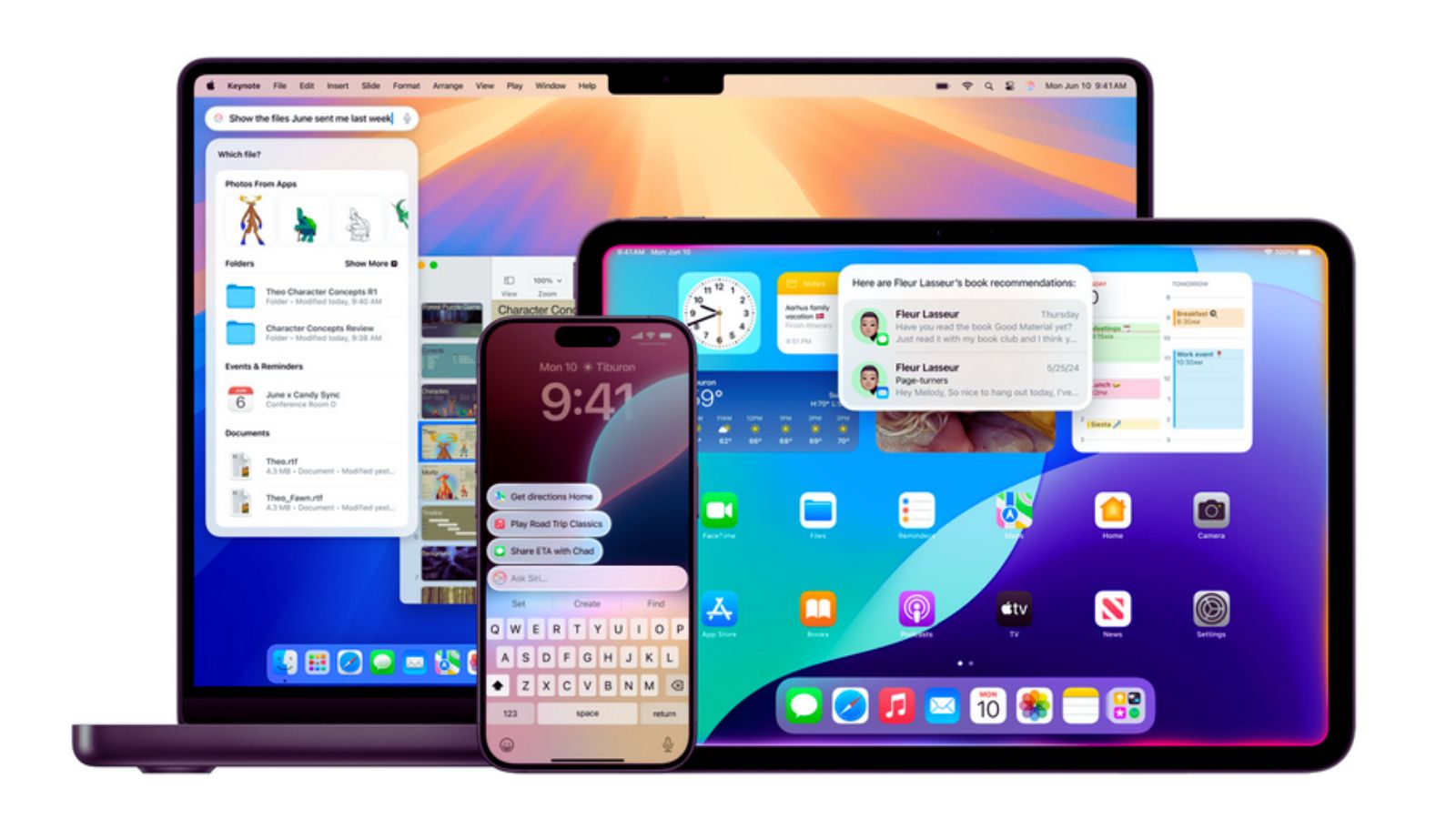We have all got Artificial Intelligence wrong so far. AI might be the buzzword these days, but we are all still confused about what the technology can do. The fairly straightforward and uncomplicated use cases seem to have eluded most of the AI products we have seen so far. And that is exactly what Apple’s Worldwide Developers Conference this week has made me realise.
Listening to Apple executives at the event gave me more clarity on the big picture and how Apple wants to lean on AI for solving day-to-day problems. Almost a couple of years into the AI boom, the tech industry seems to be still visualising GenAI in the realm of science fiction prompting flashy products that fail to change anything for users on the ground. In contrast, Apple’s AI strategy is more about solving routine problems and making things faster and easier for everyone on the devices and applications they use all the time.
Apple’s approach to generative AI through Apple Intelligence is modelled on the best on-device models that power AI features but with a more personalised take on AI. For Apple, AI is personal. The messaging itself does the job, which reminded me of Steve Jobs, who said something similar while introducing the iMac in 1998: “iMac comes from the marriage of the excitement of the Internet with the simplicity of Macintosh.”
While some believe Apple is behind in AI technology, Cupertino took a different approach that works best for a vertically integrated company like Apple. Unlike Google and OpenAI, which are in the business of selling AI technology to others, Apple built its AI tech from the ground up with the company’s different operating systems as their foundation. It’s a very Apple approach that prioritises user experience above everything, making all its apps and services AI-ready. Apple can implement this at scale since it owns the hardware, software, and semiconductors, bringing a deeply integrated AI experience for users. Bringing generative AI to the operating systems at the core level and seamlessly blending it with applications and services on top is what is different here. Honestly, users don’t know the underlying technologies powering these systems, and that’s exactly what Apple’s AI strategy is all about.
But Apple has been transparent about how on-device, private cloud compute, and third-party model inference work. For me, though, this strategy is also significant in how Apple uses a small, low-latency AI model (3 billion parameters) and trains it to understand user commands and take actions on apps. Apple calls these types of AI-driven tasks “personal context and a relatively small AI model is what is needed to drive those features. On Siri, for example, handling user commands that require opening and utilising multiple apps is the result of these small models running in the background. The advantage of keeping models small is that Apple can run these AI models on Apple Silicon.
Apple may use large language models hosted in Apple’s data centres (called “private cloud compute”) for some tasks. But these data centres run completely on Apple Silicon, and the data sent to and from them is fully encrypted and secured. Apple is shunning the approach that others have implemented, of using large language models (LLMs) at scale. Instead, Apple uses “adapters,” which are specialised for different tasks and styles and automatically decide whether to run AI locally or remotely. This makes the size of the model less significant.
The third piece of Apple’s AI strategy is opting for third-party AI models like OpenAI’s ChatGPT, which makes sense, as not all AI models have the same domain knowledge. The misconception, or at least what is being circulated by certain sections, is that ChatGPT will replace Siri, Apple’s voice assistant on the iPhone and other devices. That’s not happening, and Apple never intended it that way. Users will have the option to use ChatGPT directly from Siri or certain iOS apps, but the AI chatbot is not replacing Siri at all. Rather, Apple views ChatGPT as an alternative to Apple’s models in certain situations or tasks. Think about analysing a PDF or doing some generative writing, integrating ChatGPT — for free, without the need to create an account — is a good deal. And before referring any query to ChatGPT, the iPhone’s operating system will ask for a user’s permission.
Apple is using its own proprietary AI models for Apple Intelligence. The company said it doesn’t train its models with private data or user interactions, which is a very unique approach compared to other companies. It is now clear that Apple will hold the most power, maintaining full control over its AI features, while ChatGPT will be used on an “as-needed basis” rather than powering Apple Intelligence itself. Of course, both Apple and OpenAI benefit from the tie-up. The Sam Altman-run company gains access to Apple’s massive user base. For Apple, it saves a lot of money by not having to create an AI chatbot from scratch that functions similarly to ChatGPT.
Trade pundits may have expected more from Apple on the AI front, but Cupertino continues to follow the same path as before. Apple’s approach to making AI more practical and functional, with tight control over everything while also maintaining privacy, is commendable. If AI can proofread and rewrite documents, transcribe phone calls, summarise emails, and let you generate emoji-like reactions on the fly, these features are “harmless” compared to the AI narrative that has been presented to us for months. Some are concerned that AI tools might render old tech obsolete, but that’s how technology works. The iPod was replaced by the iPhone—both made by Apple.
© IE Online Media Services Pvt Ltd
First uploaded on: 13-06-2024 at 21:45 IST









